- Detached retina, very simply, is when the retina breaks away from its normal position against the back wall of the eye.
- The retina is a delicate sheet of tissues lying snugly against the back wall of the eye. It functions much like the film in a camera transforming light into a "picture" which, in the case of the eye, is transmitted through the optic nerve and "developed" in the brain.
- Once the retina is detached, it no longer functions properly in transmitting “pictures” to the brain. The blindness or blind spots caused by the detachment are permanent unless the retina is promptly put back in place. Retinal detachments are often preceded by holes or tears in the retina, which can occur for no reason. The vitreous, a gel-like substance filling the interior of the eye, will seep under the retina and cause the detachment.
- It is painless.
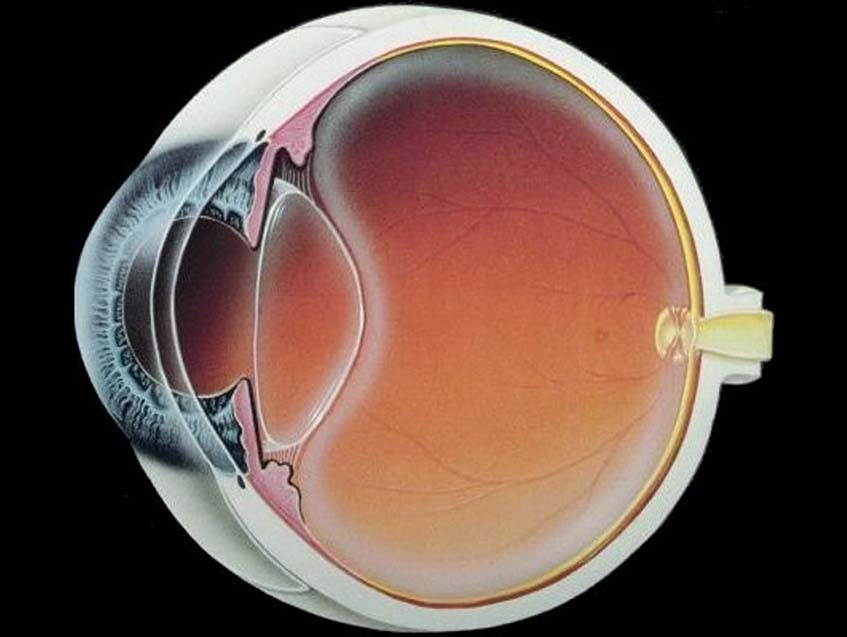
Graphic of normal eye
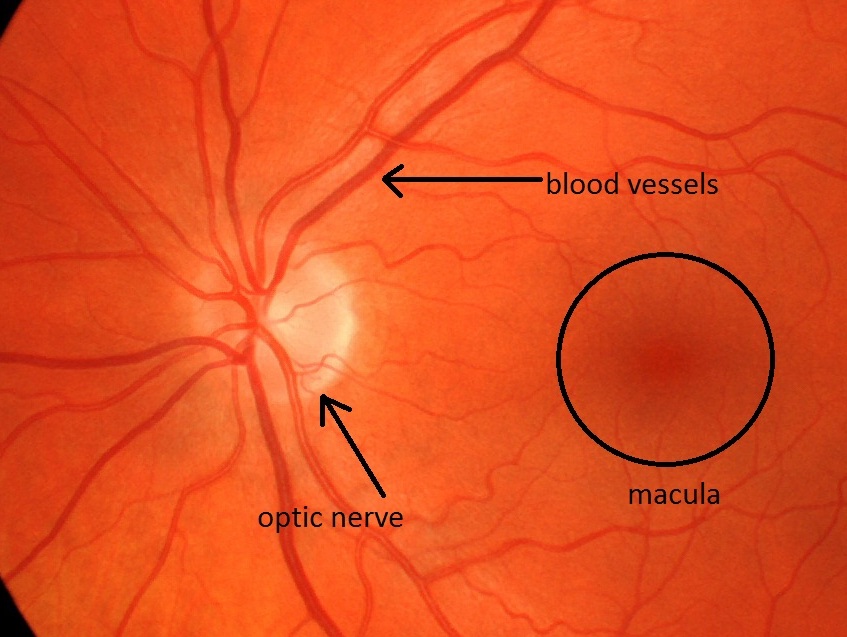
Photo of a normal eye
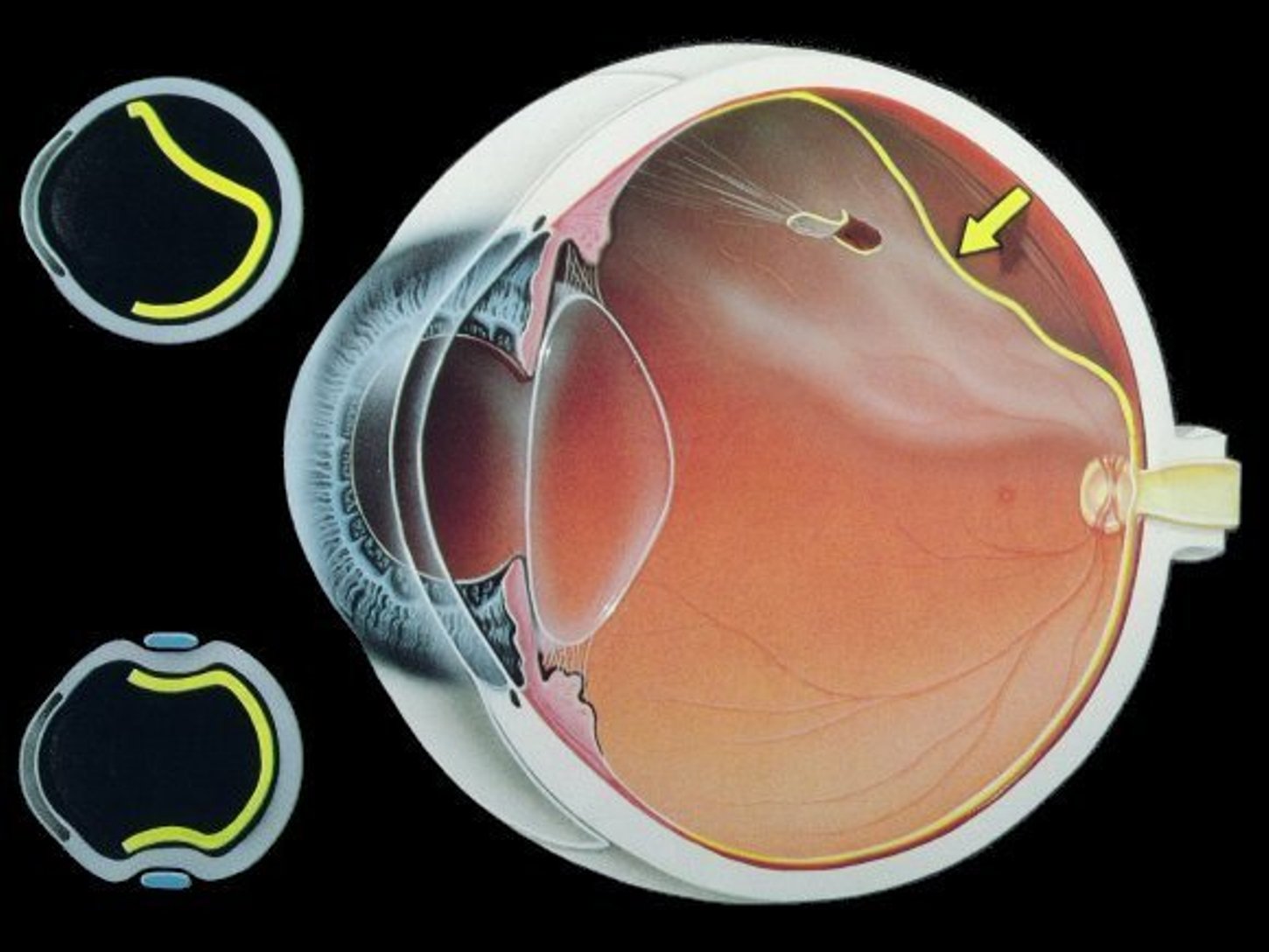
Illustration of a superior
tear / retinal detachment.
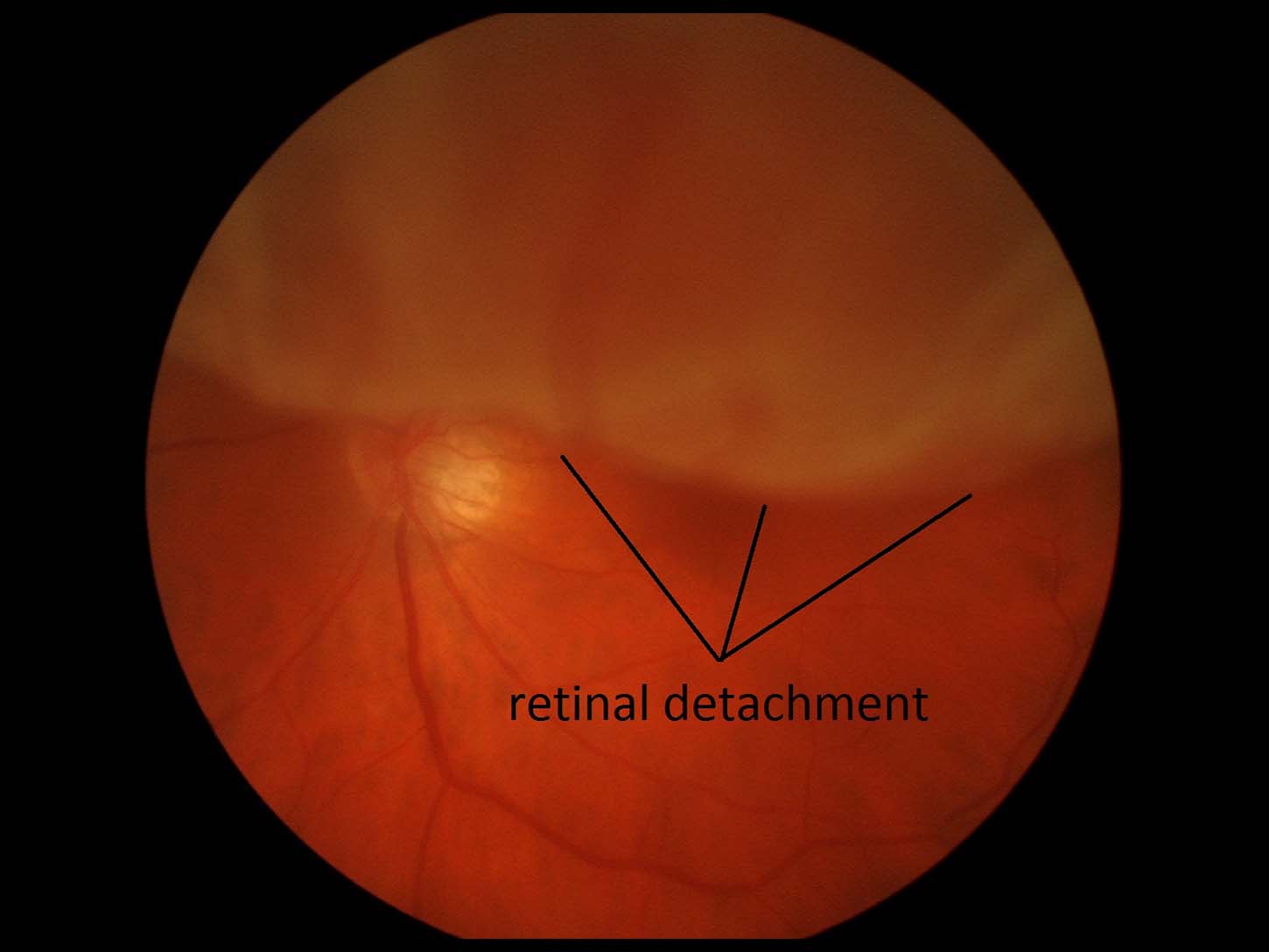
Patient waited 2 weeks before
coming in. Vision was lost.
WARNING SIGNS:
- Light flashes inside your eye.
- Sudden showers of black dots or “floaters” in your vision that have not been there previously.
- Persistent “shadows” or “veils” in your field of vision. These will eventually increase as the problems more serious.
- Sudden blurred or distorted vision.
If you experience any of the above symptoms, call our office immediately describing your symptoms. You will be seen that day on an emergency basis. You will most likely have your eyes dilated. There is no pain associated with a Retinal Detachment. If not evaluated promptly, permanent loss of vision can occur.
CAUSES:
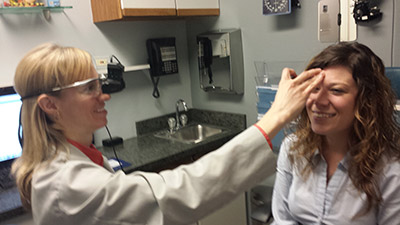
The doctor performing a dilated retinal exam
- Trauma or blows to the eyes or head or severe eye injury can cause retinal holes, tears, or a detached retina.
- In diseases such as diabetes or wet macular degeneration, bleeding of the blood vessels can pull the retina out of place.
- Degenerative changes in the retina due to age
- Diabetes
- Hereditary thinning of the retina.
- Retinal detachments occur as a result of age more often in men than in women.
- Very nearsighted people are more susceptible to detachments because of usually a thinner retina.
- Detached retina, however, can occur in either sex of any age in apparently normal eyes so regular eye examinations are important.
- Recent cataract surgery
- They can "just happen"
TREATMENT:
Done on a referral basis to a RETINAL SPECIALIST
- Retinal holes and tears can be treated and corrected with laser if detected early. More serious (large) detachments must be treated surgically. Treatment can include the use of lasers, xenon arcs, photocoagulation, diathermy, and cryosurgery (the use of extreme cold).
- Surgery is more involved when the retina is detached because the retina must be reattached to the underlying tissues in addition to repairing the tear. The surgery may also include draining the fluid separating the retinal layers. In some cases, the tissues of the outer wall of the eye are brought in to meet the displaced retina by the use of a scleral buckle.
- Eyes should be examined three and six months after any severe blows to the eyes or head to make sure any tears, holes, or detachments have not begun to develop.
- Statistically a retinal detachment in one eye increases the risk of a retinal detachment occurring in the second eye. Therefore, regular examinations are important in preventive eye care.
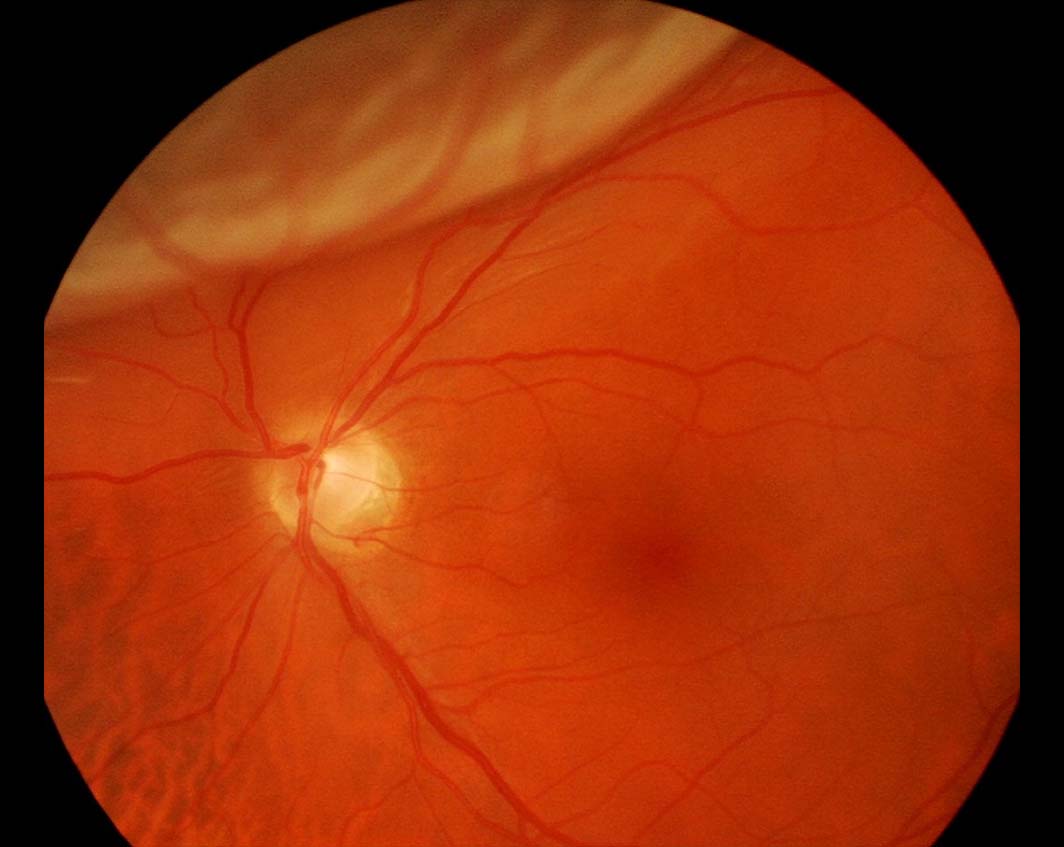
Ret Detachment; 1 day old.
Sent for immediate surgery.

Same patient 3 mo later;
complete healing with no loss of vision
Posterior Vitreous Detachment
What causes flashes, spots and a vitreous detachment?
The center of the eye is filled with a clear, jelly-like fluid known as the vitreous humor. Often, small flecks of protein or other natural matter become trapped in the vitreous during the formation of the eye before birth. These particles remain in the vitreous throughout life and are occasionally seen as spots or floaters. Spots and floaters can also be caused by deterioration or shrinkage of the vitreous as part of the aging process. During childhood it is a gelatin-like solid. As we age, the vitreous begins to liquefy. More specifically, sometimes when the vitreous ages and becomes more liquid, it can pull away from the retina. When it does one miight see spots or light flashes just like when experiencing a retinal detachment. This collapse or vitreous separation causes microscopic particles to "float" within the eye, casting tiny shadows on the retina. We see these as specs or webs depending on their shape. Although distracting and annoying, these naturally formed spots and floaters rarely cause loss of vision. These symptoms can occur spontaneously or result from injury to the head or eye. Serious eye diseases such as diabetic retinopathy or macular degeneration may also cause similiar spots and floaters.
Also as the vitreous pulls away from retina, occasional bursts of light or flashes can be intermittantly seen. If it is truly only a vitreous detachment, these flashes will usually cease in a matter of days or weeks when the vitreous has fully detached from the retina. Some people will continue to see occasional flashes caused by the loose vitreous scraping or bumping against the retina. Usually, this happens when the head is moved suddenly. If you have ever bumped your head hard, you may have seen stars in your vision. This is due to the vitreous hitting against the retina. Except when they are symptomatic of a torn retina, flashes, like most spots and floaters, occur in a normal aging eye. IF YOU HAVE A SUDDEN ONSET OF FLASHES OR SPOTS, YOU NEED A RETINAL EVALUATION ASAP, to rule out a Retinal Detachment
IN SUMMARY:
- A vitreous detachment will present with ALL THE SAME SYMPTOMS of a Retinal Detachment, except there is no loss of vision and no treatment is required except monitoring.
- Caused by the gel in the eye (vitreous humor) shrinking ,which occurs with age, and thus pulls away from the retina
- The vitreous is attached to the retina and is similiar to the membrane found when peeling a hard boiled egg. You hope that the shell will come away cleanly from the egg, otherwise the shell breaks away in pieces. The same applies with the vitreous. You want it to pull cleanly away from the retina, like a piece of velcro. If a piece of vitreous sticks to the retina when it is pulling away, it can cause a Retinal Tear, which can lead to a retinal detachment.
- Repairing a Retinal Tear is usually much less traumatic than treating a detachment, so early detection is VITAL.
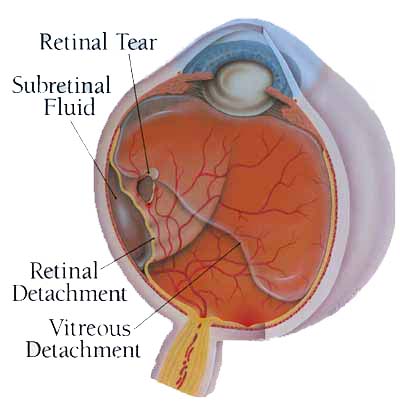
Notice that the Vitreous detachment does not pull the retina away from the eye wall. One must have an immediate, dilated retinal evaluation with any of the signs or symptoms listed above. If thevitrous adhears to any portion of the retina when it is detaching, it can lead to a potentially blinding retinal detachment. We set aside slots in our daily schedule to accommodate emergencies like this.

